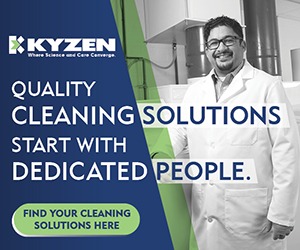Preventing Risk, Protecting People: Workplace Machinery Responsibility
To eliminate human error and prevent a worker from performing an unauthorized or unsafe operation when machinery is engaged, trapped key interlock safety systems are an advanced method of Lockout/Tagout machine guarding that protect the operator and other employees in the machine area from hazards.
Posted: August 15, 2018
Machinery and machine guarding is one of the Department of Labor’s Occupational Safety and Health Administration (OSHA) most cited violations year after year. In 2017, it was the eighth most frequently cited safety infraction on the list, with OSHA recording 1,933 machine guarding violations, resulting in millions of dollars’ worth in proposed penalties.1,2 According to OSHA, approximately 18,000 workers that operate and maintain machinery suffer amputations, lacerations, crushing injuries, and abrasions each year as a result of inadequate machine guarding protocols and, on average, 800 fatalities due to inadequate protection.3 The absence of proper machine guarding procedures or protocols in place put workers at significant risk.
In accordance with regulation standard 1910.212, employers have a legal obligation to provide machine guarding to protect the operator and other employees in the machine area from hazards.4 Many will assume Lockout/Tagout (LOTO) is the only option. This is a common misconception, and this method can be defeated. But trapped key interlock (TKI) safety systems can force employees to follow a pre-determined sequence of operations and are recommended in the latest ANSI Z244.1 standard.
IMPROVING LOTO: STANDARD ANSI Z244.1
Today’s manufacturing environment is very demanding, with increasing pressures on supply chain efficiency and productivity. According to OSHA, approximately 3 million workers service equipment and face the greatest risk of injury if LOTO is not properly implemented.5 Due to the rise in machine guarding and LOTO violations, in 2016 the Z244 Committee made a series of updates to the ANSI/ASSE Z244.1 (2003) standard aiming to reverse the trend and expand the language of the standard to be scalable to meet the needs of both large and small businesses.6 This 2016 revision focuses on the control of hazardous energy and alternative methods to protect workers against the startup of machinery. The changes were made to improve hazardous energy control procedures and guidance for working with contractors (Section 7). The revision more clearly defines alternative risk reduction methods of LOTO (Section 8), identifying trapped key interlocks as an alternative method to ensure all residual motion and energy is completely expelled once the machine has been isolated – removing the risk of spontaneous startup.7
WHAT ARE THE MACHINE GUARDING OPTIONS?
Isolating equipment or machinery is essential in order for workers to carry out important work maintaining, cleaning or repairing. Workers risk serious or fatal injures if machinery ‘energizes’ unexpectedly. LOTO addresses the need to isolate equipment and, as a written process, allows safe personnel access when maintenance of machinery is required. However, this process is susceptible to human error, tempting workers to bypass safety practices, putting themselves and their colleagues at risk. Trapped key interlock (TKI) safety systems remove the temptation of bypassing procedures and eliminates human error. This alternative protection measure has enhanced the protection of workers in the United States since 1932 and prevented injury and death for countless workers.8 In effect, TKI is the advanced method of Lockout/Tagout, going above and beyond to ensure safety procedures are followed.
HOW DOES TKI WORK?
An initiating key is trapped while the machine is running. To start the process, the key is turned and removed, engaging the lock bolt and isolating the power. This key then engages the associated access interlock, allowing the individual access to the area safely. The key remains trapped in the access lock while the gate or door is opened. The key can only be removed when the gate or door has been shut, then following back to the point of power isolation to restart the machine. When two or more trapped key interlocks are used in a safety application, an interlock system is formed. An interlock system is a group or series of trapped key interlocking devices applied to associated equipment or guarding in a way that allows operation of the equipment only in a safe, predetermined sequence of operations.
TKI safety systems can be designed for both linear and non-linear sequential safety operations, mounted permanently on the equipment to ensure that a process is followed and cannot be sidestepped or cut short. When properly applied, a trapped key interlock safety system makes a significant contribution to worker safety. Five key reasons to implement a trapped key interlock solution are:
- Fulfills ANSI Z244.1 requirements for machine guarding.
- Delivers an enhanced level of protection vs. LOTO.
- Removes the dangers of short cuts and mistakes.
- Withstands harsh environments for decades of protection with a robust design.
- Ensures no worker left behind in full body access areas with the use of a personnel key.
TKI safety systems are used to eliminate human error and prevent a worker from performing an unauthorized or unsafe operation when machinery or equipment is otherwise engaged. They are implemented to protect lives, equipment, operating processes, and production. It is the goal of every company to create a safe working environment for their employees and a TKI safety system should be an instrumental part of such safety procedures.
References
1 https://www.osha.gov/Top_Ten_Standards.html
2 https://www.employersresource.com/business-compliance/10-common-osha-violations-2017/
3 https://www.osha.gov
4 https://www.osha.gov/pls/oshaweb/owadisp.show_document?p_table=STANDARDS&p_id=9836
5 https://www.osha.gov/dep/greenjobs/windenergy_loto.html
6 https://www.tsctrainingacademy.com/tscta-news/lockout-tagout-latest-revision/
7 https://www.kirkkey.com/single-post/2018/03/21/KIRK-Complies-with-ANSI-Z2441
8 https://www.kirkkey.com/single-post/2017/06/15/5-Reasons-to-Protect-Your-Workers-with-Trapped-Key-Interlocks?Page=KIRK%C2%AE%2BIntroduction

















